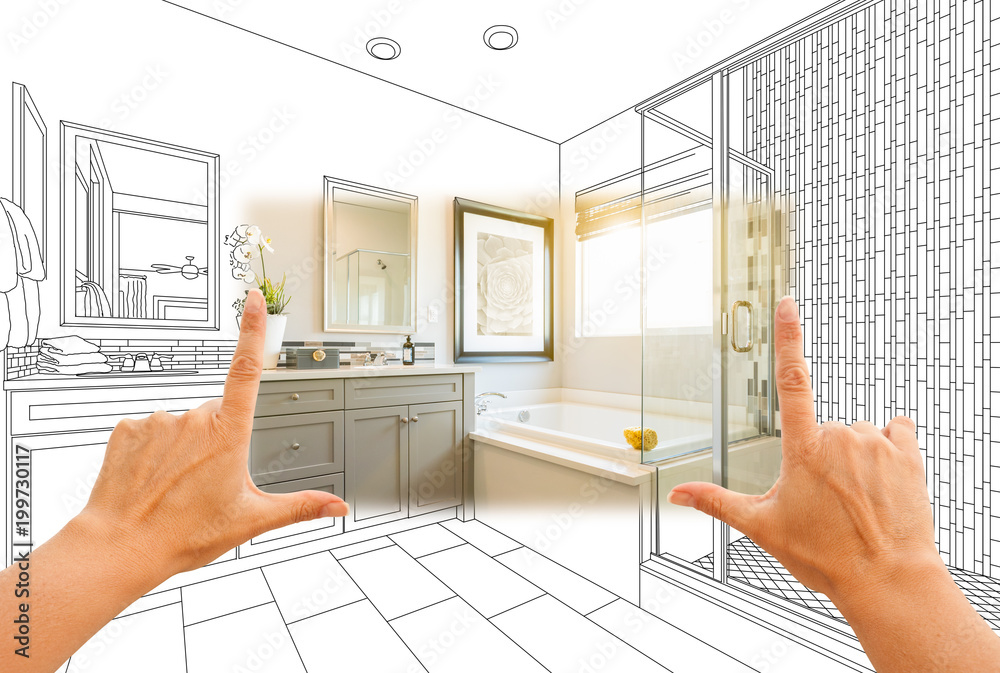A cozy bathroom upgrades your level of comfort and privacy. Updating it is one of the best ways to give your home a modern touch and increase its value. However, renovating a bathroom can be challenging, especially when you don’t know where to start.
Planning a bathroom renovation requires patience and wise decisions. One small mistake in plumbing or waterproofing can lead to severe water damage. Therefore, taking your time to plan the details, especially the most crucial ones, is best.
That said, from layout and design down to the bathroom sink, here’s a quick guide on planning a bathroom renovation:
1. Create A Checklist
The first step to planning any home improvement project is creating a checklist of what you want to improve or change. At this phase, you’ll decide whether to change the layout or make repairs and cosmetic upgrades.
When changing your bathroom layout, you must hire a professional plumber Liverpool. Since changing the orientation of fixtures or knocking down walls can affect the plumbing, consulting an expert is necessary. Moreover, even simple upgrades, like replacing a faucet, toilet, or bathtub, requires expert skills. They can also help you create a checklist of bathroom renovation essentials, so you’ll know which parts to change, replace, or repair.
2. Set Your Budget
The typical bathroom renovation cost ranges between USD$6,000 to USD$16,000. Luxury bathroom renovations and remodels, including new tiles and high-end fixtures, may cost around USD$28,000 or more. The upgrades you can make depend on your set budget. You can allot wiggle room for last-minute changes and additional expenses.
To set your budget, refer to your checklist. Changing the layout will cost more due to the plumbing expenses. Your choice of materials and the labor cost in your area also impact the total cost.
3. Choose A Layout And Design
After evaluating your checklist and setting a budget, you may choose the bathroom layout and design that best fits your needs and preferences. It’s best to prioritize function, comfort, and practicality when renovating your bathroom.
A functional and comfortable bathroom layout creates a smooth flow that lets you easily navigate the space. You should have enough space to walk, especially if it’s the primary bathroom. For smaller bathrooms, placing a seamless mirror along the vanity would help make it look more spacious.
Furthermore, staying practical in designing a bathroom lets you maximize your budget. It helps you determine when to splurge and when to save. For instance, hiring professionals for plumbing, waterproofing, and tilework can be expensive, but investing in quality is worth it.
Concerning other design aspects, such as textures and colors, creating a mood board would help. Keeping the bathroom light and sleek is the best way to modernize the space and make it look airy.
4. Update Your Flooring
Replacing and updating your bathroom tiles is one way to modernize your bathroom. With a wide range of bathroom flooring options in the market, picking the best tile can be intimidating. You must choose one that’s durable, long-lasting, and elegant.
One of the most popular tile types is porcelain. It’s perfect for a budget renovation since it only costs around USD$2 to USD$30 per square foot. Additionally, it is more durable and rigid than ceramic and comes in various designs to fit any bathroom design.
Natural stone tiles like granite and marble are excellent choices for an elegant bathroom design. They typically cost between USD$5 to USD$10 per square foot. However, larger tiles or slabs may cost more than USD$20 per square foot.
The key to ensuring the quality of bathroom tiles is expert installation. Tilework may seem like a potential DIY project, but leaving it to the professionals is the safest bet, especially if you want it to last long.
5. Select A Vanity Countertop Material
A bathroom renovation is incomplete without a brand-new vanity countertop. Some of the top material options are granite, marble, and quartz. In terms of durability and longevity, quartz is an excellent choice for bathrooms due to its rigid structure. It’s perfect for areas constantly exposed to water since it’s less porous than natural stones. It also comes in various designs and patterns, giving you more options to give your bathroom a more elegant look.
6. Purchase Fixtures
Your choice of fixtures is another significant factor in your budget. In a partial renovation, you may keep the fixtures and retain the original layout while carefully replacing the tiles. However, a major renovation may require purchasing a new toilet, bathtub, shower system, basin, faucet, and more.
7. Update The Electrical System
Renovating your bathroom also requires updating the electrical system, especially if you’re knocking down a wall with wiring for light switches and outlets. Installing two or three ground fault circuit interrupter-protected (GFCI) outlets are required for your safety. GFCI outlets protect you from electrocution risks, especially in liquid-prone areas like the bathroom, laundry, and kitchen.
8. Consider Adding Storage
Storage is often overlooked when planning a bathroom renovation. Consider adding shelves and cabinets to store your supplies. This helps ensure your bathroom stays organized and clutter-free.
Conclusion
A bathroom renovation can be challenging, especially if you’re planning one for the first time. Therefore, consider following the abovementioned methods and consulting bathroom renovation experts and plumbers to plan and finish the project smoothly.





